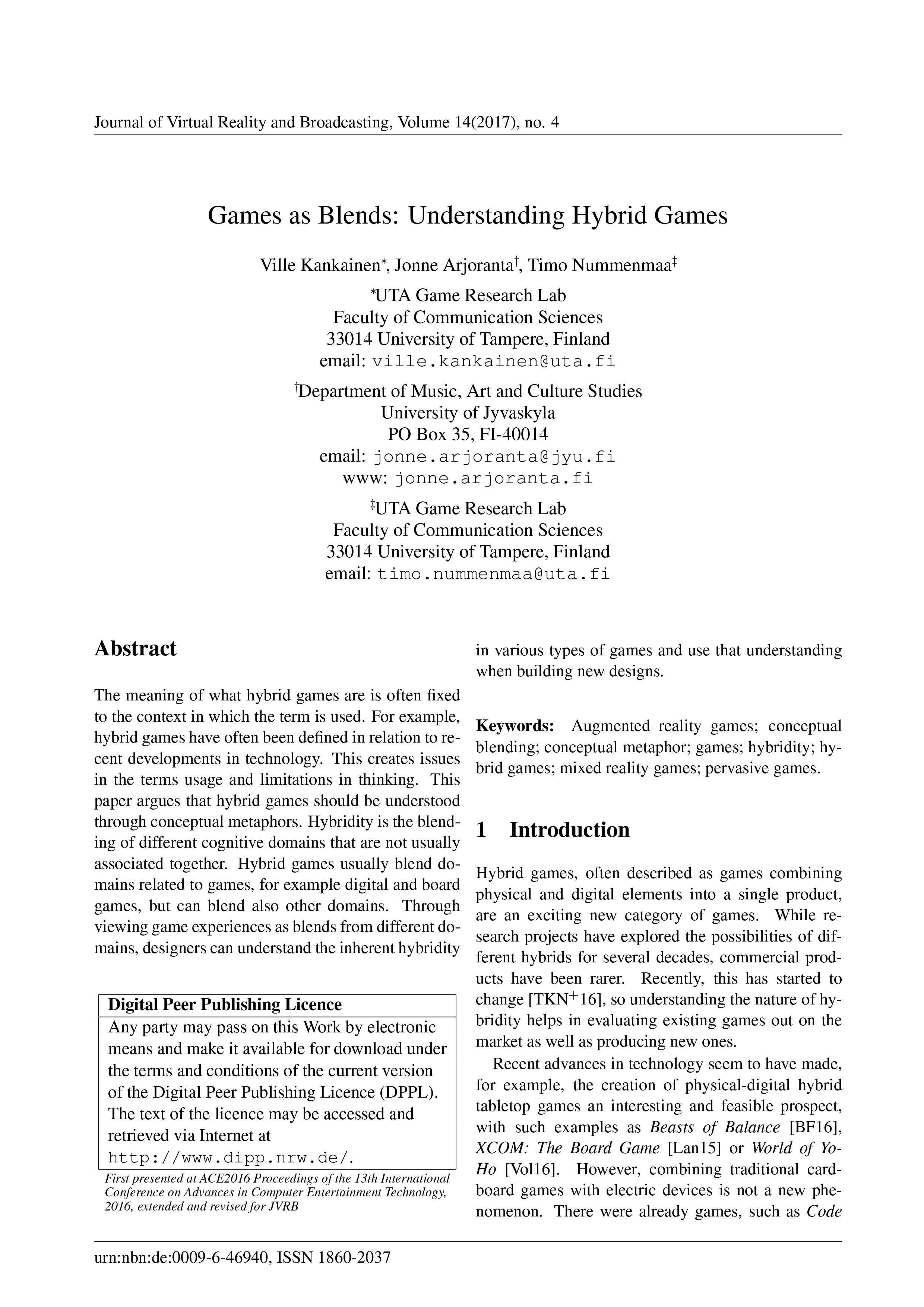Games as Blends: Understanding Hybrid Games
DOI:
https://doi.org/10.20385/1860-2037/14.2017.4Keywords:
Pervasive Games, augmented reality games, conceptual blending, conceptual metaphor, games, hybridity, mixed reality gamesAbstract
The meaning of what hybrid games are is often fixed to the context in which the term is used. For example, hybrid games have often been defined in relation to recent developments in technology. This creates issues in the terms usage and limitations in thinking. This paper argues that hybrid games should be understood through conceptual metaphors. Hybridity is the blending of different cognitive domains that are not usually associated together. Hybrid games usually blend domains related to games, for example digital and board games, but can blend also other domains. Through viewing game experiences as blends from different domains, designers can understand the inherent hybridity in various types of games and use that understanding when building new designs.
Published
2019-01-17
Issue
Section
ACE 2016





